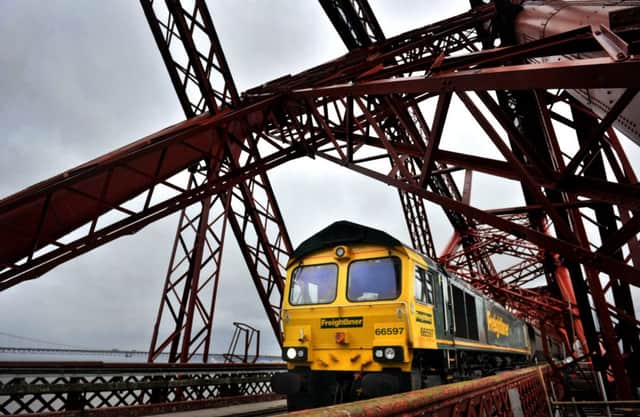Extending and developing Scotland’s rail network


Over the past 30 years, Scotland has been the trailblazer for re-opening railways in response to growing gridlock on the British road network. Scores of new stations have been created on the existing network north of the Border, and new lines now link communities which lost their services in the 1950s and 1960s – Edinburgh to Bathgate, Hamilton to Larkhall, Stirling to Alloa, Bathgate to Airdrie and several suburban routes in Glasgow.
Passenger traffic has been the key driver – and all these re-openings have proved to be more successful than originally forecast – but the Stirling-Alloa scheme also unlocked major freight benefits, with an extension eastwards to allow coal trains to reach Longannet power station more directly, freeing up capacity for passenger trains on the busy Forth Bridge.
Advertisement
Hide AdAdvertisement
Hide AdWhile monumental sums are to be thrown at new roads in the coming years – £3 billion for the A9 and £3bn for the A96, for example – the level of government ambition for new railways in Scotland is modest. With the completion of the Borders Railway (£300 million) in 2015, the only new railway in prospect is a short link to Glasgow airport, and this will be little comfort to some very substantial Scottish towns which are still entirely dependent on road transport – Fraserburgh, Hawick, Peterhead and St Andrews to name just a few.
Perhaps the most pressing case – and certainly the most achievable – is the six-mile branch line from Thornton to Levenmouth in Fife. Together, the contiguous communities of Buckhaven, Leven and Methil – with a population of more than 24,000 – represent the largest conurbation in Scotland with no rail service. Leven lost its passenger trains in 1969 in a “post-Beeching” rash of closures in Fife. However, unlike the well-integrated bus-rail operation now serving St Andrews at Leuchars station, Levenmouth remains remote from active rail connections, and suffers low level car ownership and continuing unemployment problems.
And yet, the prospects for passenger and freight trains should be good – the first mile of the branch line was re-opened for open-cast coal traffic 18 months ago, and the rest of the rail corridor (previously serving Methil Docks and the spirits giant Diageo at Cameron Bridge) remains entirely in the ownership of Network Rail, with most of the track in place.
Over recent years, plans have been developed to reconnect Diageo to the rail network, taking thousands of lorries off Fife roads – and there are other rail freight prospects in the area, including the Fife Energy Park in Methil. Passenger trains would slash public transport journey times to Kirkcaldy, and the centre of Edinburgh would be just over an hour away.
There would be significant sharing of costs between freight and passenger re-opening. Vegetation clearance, drainage and fencing work, refurbishment of structures and track renewal – all can be shared between the two elements of a re-opening scheme. Passenger trains will need to run at higher speeds than freight services, but only a modest differential will be needed on the six-mile branch – the real speed advantage of rail over road will be won on the main line, from Thornton through Kirkcaldy to Edinburgh and beyond.
A feasibility study undertaken for the regional transport partnership, SEStran, in 2008 found that a reinstated passenger service would attract up to 500,000 passengers a year. Unfortunately, Scottish Government support was not forthcoming at the time, but Fife Council has committed funds towards a re-opening project, and the local community has re-launched the Levenmouth Rail Campaign (LMRC) with six public meetings and a planned conference in Methil on 20th October. The public have responded enthusiastically to a rail re-opening petition, and the case for a passenger and freight railway is gathering strength.
LMRC secretary Allen Armstrong said: “Levenmouth is showing some signs of stirring from decades of deindustrialisation, but major recent investments, led by Diageo and development in the Fife Energy Park, are still hampered by poor road and rail accessibility.
“A key missing link is the reinstatement of the mothballed Thornton-Leven line. With higher than average levels of unemployment and deprivation, local people need better transport options to improve their economic options which the rail link to the national network would bring”
Advertisement
Hide AdAdvertisement
Hide AdPutting Leven back on the railway map – and thereby opening up important new employment and educational opportunities – will depend on partnership between the public and private sectors, and between freight and passenger interests. The prize is a safe, civilised and sustainable transport link to one of Scotland’s more neglected corners.
• David Spaven is Scottish representative of the Rail Freight Group www.rfg.org.uk www.lmrc-action.org.uk
SEE ALSO